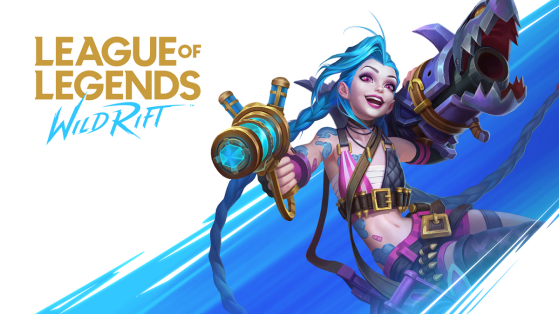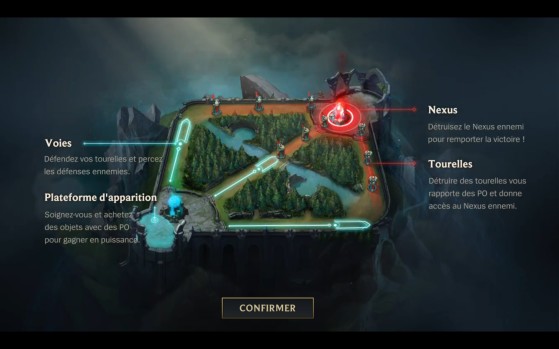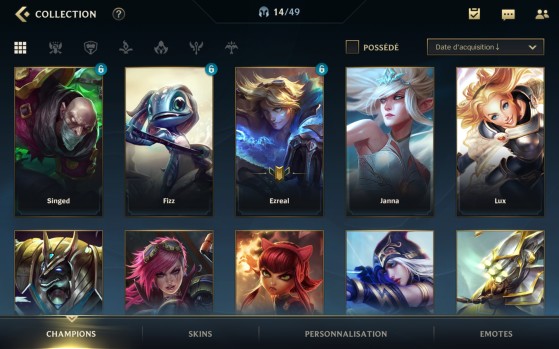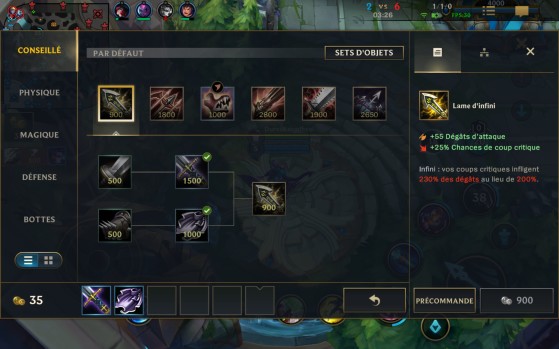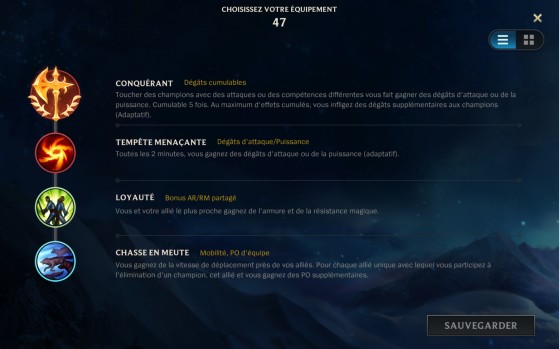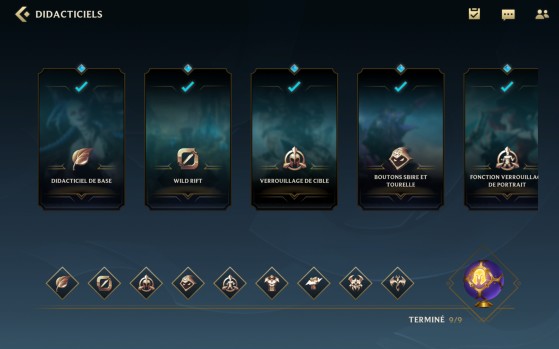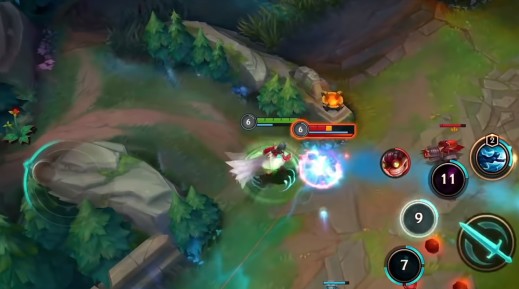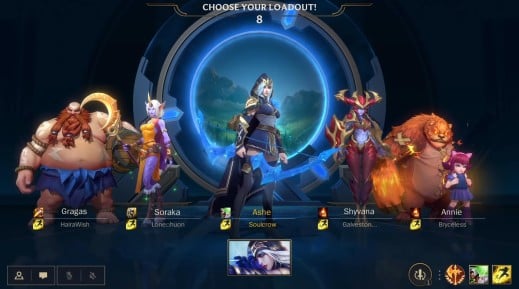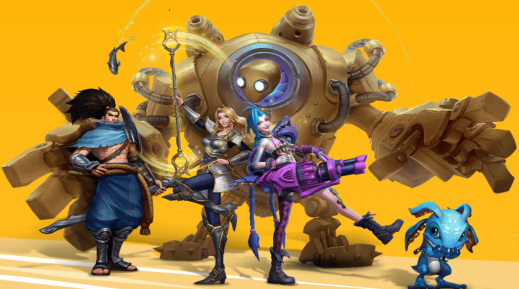Wild Rift is the mobile version of League of Legends, available on iOS and Android. You can play as one of 49 unique champions in a 5v5 match.
Whether you choose to play alone or with friends, the League of Legends community is waiting for you on Summoners’ Rift!
We’ve put together a guide on everything you need to know to get started in Wild Rift.
How Does Wild Rift Work?
In Wild Rift, the map is separated into two halves, one for each team. To win, you must destroy the enemy Nexus located in their base, all while preventing them from taking down your own. They can found at opposite corners of the maps, just in front of where you spawn.
Three paths, or lanes, lead directly to the enemy base from your own. Each lane contains six towers: three friendly towers belonging to your team and three hostile enemy towers that must be destroyed.
To help you in your task, minions – small aggressive creatures – will spawn periodically from your base and march up your lane to attack enemy towers or champions.
Killing these minions – or creeps – is your main source of gold, a highly valuable resource that can be used to buy items that improve your champion during the match. Dealing the final blow to a creep will give you the maximum amount of gold available. Killing champions and towers will also reward you with a substantial amount of gold.
Tip: Destroying a tower next to the Nexus will give you a massive advantage. It will let you spawn supercreeps from your own base.
Unique champions
Wild Rift features 49 unique champions, each with their own distinct playstyles.
The tutorial lets you unlock a Champion of your choosing: Jinx, Garen, Blitzcrank, Ahri, and Master Yi. You can unlock the champions you didn’t pick gradually by playing games. You can also pay to unlock them immediately!
Each champ has their own skill set, as well as their own unique strengths and weaknesses. Spend some time trying them all out to figure out which ones suit you the best!
Champions can be split into 6 categories – Assassin, Bruiser, Mage, AD Carry, Support, and Tank – with each taking up a different role in the team.
The most versatile role by far is the Jungler, who fights neutral monsters in the jungle and helps his team by turning up where they’re needed. When playing as the Jungler, an Assassin, Brusier, or Tank is the ideal choice.
In the Dragon lane, or the bot lane, teams will always run an AD Carry, to deal massive damage, alongside a Support, who heals and protects their botlane partner.
From quite early on in the game, a dragon will start to appear between the bottom lane and the midlane, and teams can defeat it by working together with their Jungler.
The midlane is home to Assassins and Mages, while a Tank or a Brusier will typically take the Baron lane, also known as the top lane. Towards the end of the game, teams will usually group up with their Jungler to take down Baron Nashor.
Making Your Champions Stronger with Items and Runes
Runes give your champions an added bonus and are selected before the game starts.
They reward you with different effects that will improve your champions depending on which runes you’ve picked.
For example: choosing the Conqueror rune will let you deal more damage with your champion, while the Font of Life rune gives you a way to heal friendly players.
As we stated earlier, taking down minions, enemy players, or towers will reward you with gold pieces.
You can spend this currency to buy all sorts of gear throughout the game, from items that improve your own strength, to items that help you adapt to the enemy team.
For example, Jinx, an AD Carry, plays particularly well with Runaan’s Hurricane, a physical object that allows her ranged attacks to hit up to 3 targets. And if your enemies are healing themselves too much, a champion that deals magic damage might opt for the Morellonomicon, which makes their damage output reduce enemy healing.
Learning How to Play
Wild Rift features nine tutorials to help you get started and get to grips with the game from a hands-on perspective.
These tutorials will help you learn how to move with the joystick, how to lock to targets, and how towers and creeps work.
You’ll also learn how to play each lane and in the Jungle. The Jungler spends most of their time in the jungle between their lanes, defeating neutral monsters to earn money and temporary buffs.
One of the main concepts for improving at Wild Rift is knowing when to attack, stand your ground, or to run away. One of your allies is destroying a tower all by themselves? Go and give them a hand! Ambushed by three enemy players? Get out of there as fast as you can. Can you see your team fighting the enemy on the other side of the map? Sneak up behind your opponents and take them from behind!
Summoner’s Rift features patches of tall grass alongside each lane, AKA the brush, which will let you hide from the enemy team’s line of sight, making them the perfect spot to set up an ambush!
If the enemy team decides to group up and attack a lane together, protect yourself by staying under your tower – which will attack enemy champions if they get too close without minion cover – and defend it with your teammates.
Towards the end of the game, you can take on a powerful monster known as Baron Nashor with the help of your allies. Taking down Nashor will give your entire team a powerful buff to help you as you gear up to take on the enemy base for what should be the final time.
However, always be on the lookout for enemy players when fighting Nashor, as an enemy may try to steal away its buff for their own team by dealing the final blow to the monster.
While League of Legends: Wild Rift is a complex game, it’s easy to pick up once you get your hands on it, though there’s a lot to take
in, and it will take you some time to learn everything you need to know. And with such a large pool of champions, each with their own unique playstyles, combined with new faces constantly being added to the game, it seems that Wild Rift is here to stay!
So good luck, and be sure to leave it all out there on the Rift.
